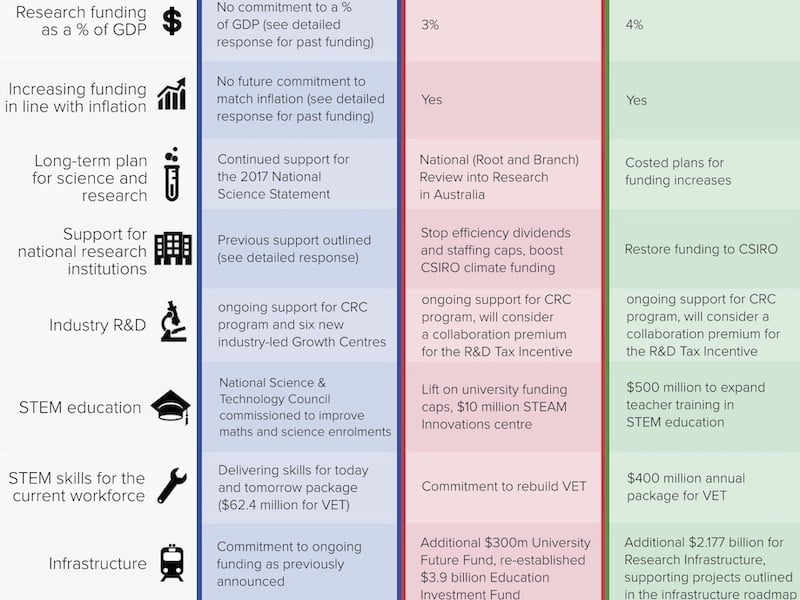Peak industry body Science & Technology Australia (STA) has released an election summary report card covering the policies of the major parties across a range of issues for the sector.
The parties were responding to a survey sent by the STA covering a range of issues for the industry across all of science, technology, engineering and mathematics and from education and training to industry support and development.
By way of introduction, STA pointed to a 2018 Galaxy Poll that showed nine in ten Australians believe government policies should be based on the best available science, and that eight in ten feel the government should spend more on science and technology.

With that in mind, STA argues that all Australians should make these policy positions an important part of their decision making at the ballot box.
“We are facing downward trends in government investment in science and technology, no visionary national plan, and increasing job insecurity in our sector,” President of STA and Dean of Science at UNSW Professor Emma Johnston AO said.
“To capitalise on the inspiring STEM talent and opportunity we have here in Australia, and to pass on the health, environmental and economic benefits to people across the world, this must change.”
While the Coalition, Labor and the Greens all indicate an understanding of the importance of science and technology, and all now support the need for a science minister to be in cabinet, the differences in funding plans are clear.
“It’s clear the Coalition is very supportive but they’ve got a business-as-usual approach, so we haven’t heard additional funding announcements in the campaign and the reality is we’re in a context of sliding support from government and industry investment in science and technology which is bad news,” Professor Johnston told Fran Kelly on Radio National on Wednesday.
“We’re in a poor state now, about 1.8 per cent of GDP in Australia is spent of science and technology which is well below the OECD average and it’s declining still.”
“Labor has committed to a 3 per cent of GDP being spent on research and development by 2030. So that’s really promising. The Greens have committed to 4 per cent which is very ambitious.
“But it’s not beyond the realms of what’s happening around the world. Some of the most innovative, successful economies are spending about 4 per cent of GDP on science and technology,” Professor Johnston said.
She also pointed to the strength of private partnerships with university research as something STA wants to see more of in future, with R&D tax incentives a big driver of such work.
“That was one of our key asks as a sector and that is because we know when businesses work closely with university researchers or agency researchers such as CSIRO, they do very well and it’s much more productive than when they work in an isolated fashion with themselves,” Professor Johnston told RN.
Professor Johnston said it was pleasing to see Labor’s latest $170m announcement for improving R&D tax incentives, and that the STA had lobbied the Coalition to reinvest its $2b saving on the R&D tax incentive into other mechanisms to encourage industry and universities to work together, but there had been no such announcements.
Other areas of the report covered education and diversity targets, with both the one page summary and the full party responses available for download.
Do you know more? Contact James Riley via Email.

